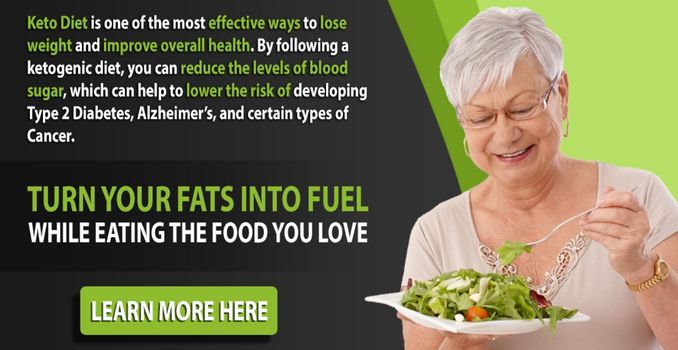The Ultimate Showdown: Carnivorous Diet Vs. Keto – Which Is The Right Choice For Your Health And Weight Loss?
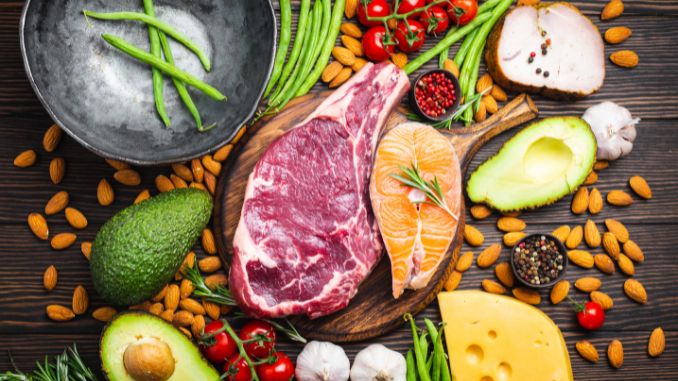
Last updated on November 6th, 2025 at 08:39 pm
Before we begin with carnivore diet vs keto, are you stuck deciding between a meat-focused diet or the popular keto diet? There are so many diets out there that it's hard to know which is best for your health and weight loss goals.
In this article, we'll talk about the showdown between the Carnivore Diet vs Keto. We'll look at the good and bad sides, how they affect weight loss, and how they might help or hurt your health. The meat diet is all about eating animal products and avoiding plants, while keto is about eating lots of fat, some protein, and very few carbs to get into ketosis.
Let's figure out which diet might be right for you!
Understanding The Carnivorous Diet

As the name suggests, the carnivorous diet revolves around consuming primarily animal-based foods while eliminating plant foods. This diet emphasizes meat, fish, eggs, and dairy, with little to no carbohydrates.
Carnivore dieters argue that our ancestors thrived on a similar and that it can provide numerous health benefits.
Supporters of the carnivorous diet claim that it can lead to rapid weight loss, improved digestion, increased energy levels, and mental clarity.
They argue that by eliminating carbohydrates and relying solely on animal products, the body enters a state of ketosis similar to that achieved on the keto diet.
However, critics argue that the carnivorous diet lacks important nutrients in plant-based foods, such as fiber, vitamins, and minerals, which could lead to long-term deficiencies.
Carnivore Diet Sample Meal Plan
This sample meal plan provides a glimpse into what a day of eating on the Carnivore Diet vs Keto might look like. Remember, this is just a guide; you can adjust it based on your preferences and calorie needs. Be sure to prioritize high-quality animal products and drink plenty of water throughout the day.
Day 1
Breakfast:
- 3 scrambled eggs cooked in butter
- 3 slices of bacon
- A cup of black coffee or plain tea (optional)
Lunch:
- Grilled ribeye steak (8 oz)
- 1 serving of beef bone broth
Dinner:
- Baked salmon (6 oz)
- A side of sautéed shrimp in garlic butter (4 oz)
Snacks:
- Slices of beef jerky
- Hard-boiled eggs
Day 2
- Omelette with 3 eggs and shredded cheese
- 2 sausages
- A cup of black coffee or plain tea (optional)
Lunch:
- Roast chicken thighs (with skin) (2 pieces)
- A serving of chicken bone broth
Dinner:
- Pork chops with a side of roasted Brussels sprouts
- A small serving of zoodles (zucchini noodles) with pesto
Snacks:
- Celery sticks with cream cheese
- A small handful of walnuts
Day 3
Breakfast:
- Omelette with mushrooms, spinach, and cheese cooked in butter
- A cup of black coffee with a splash of heavy cream (optional)
Lunch:
- Tuna salad with mayo, avocado, and leafy greens
- A serving of bone broth
Dinner:
- Grilled shrimp with a side of roasted asparagus
- A small serving of avocado salad
Snacks:
- A handful of almonds
- Greek yogurt with a few berries
Day 4
Breakfast:
- Keto smoothie with spinach, avocado, almond milk, and a scoop of protein powder
- A cup of black coffee with MCT oil (optional)
Lunch:
- Turkey and cheese roll-ups with a side of cucumber slices
- A serving of bone broth
Dinner:
- Baked chicken thighs with a side of sautéed kale in olive oil
- A small serving of cauliflower rice
Snacks:
- A handful of pecans
- Cheese sticks
Day 5
Breakfast:
- Scrambled eggs with cheese and avocado
- A cup of black coffee with a splash of heavy cream (optional)
Lunch:
- Cobb salad with chicken, bacon, eggs, avocado, and blue cheese dressing
- A serving of bone broth
Dinner:
- Broiled steak with a side of garlic butter mushrooms
- A small serving of roasted cauliflower
Snacks:
- A handful of sunflower seeds
- Sliced deli meats
Notes:
- Hydration: Drink plenty of water throughout the day. Bone broth and herbal teas can also help maintain hydration and electrolyte balance.
- Variety: Rotate different types of protein, vegetables, and healthy fats to ensure a variety of nutrients and keep meals interesting.
- Portion Sizes: Adjust portions based on individual caloric needs and hunger levels.
- Supplements: Consider taking a multivitamin or specific supplements to ensure adequate intake of essential nutrients [²], especially fiber and certain vitamins.
This sample meal plan offers a five-day glimpse into what eating on the carnivore diet can look like. Remember, this is just a starting point! Feel free to adjust it based on your preferences, activity level, and hunger cues. Prioritize high-quality animal products and stay hydrated with water and bone broth throughout the day.
Understanding The Keto Diet
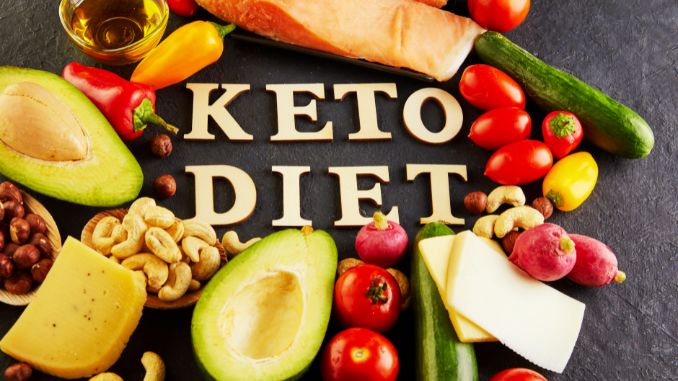
By significantly reducing carbs, the body enters ketosis, which burns fat instead of glucose. This potentially aids weight loss and provides other health benefits.
Keto dieters typically eat avocados, nuts, and meat, limiting their carb intake, typically less than 50 grams daily [⁵].
Popular for its possible benefits, such as improved insulin sensitivity and enhanced mental focus, the keto diet also shows promise for conditions like epilepsy and type 2 diabetes.
However, its long-term health impacts remain controversial and may not be suitable for everyone.
Keto Diet Sample Meal Plan
This sample keto meal plan provides a foundation for a successful keto week. This is just a starting point – personalize it with your favorite low-carb ingredients and adjust portion sizes as needed. With a focus on healthy fats, moderate protein, and low-carb vegetables, you'll be well on your way to achieving your keto goals. Don't forget to track your macros and stay hydrated throughout your keto journey!
Day 1
Breakfast:
- Avocado and bacon egg cups (2 eggs, 1/2 avocado, 2 slices of bacon)
- A cup of black coffee with a splash of heavy cream (optional)
Lunch:
- Grilled chicken salad with leafy greens, avocado, cheese, and olive oil dressing
- A serving of bone broth
Dinner:
- Baked salmon with a side of sautéed spinach in butter
- A small serving of cauliflower mash
Snacks:
- Handful of macadamia nuts
- Cheese slices
Day 2
Breakfast:
- Keto pancakes made with almond flour and served with butter and a few berries
- A cup of black coffee with MCT oil (optional)
Lunch:
- Beef lettuce wraps with avocado, sour cream, and shredded cheese
- A serving of bone broth
Dinner:
- Pork chops with a side of roasted Brussels sprouts
- A small serving of zoodles (zucchini noodles) with pesto
Snacks:
- Celery sticks with cream cheese
- A small handful of walnuts
Day 3
Breakfast:
- Omelette with mushrooms, spinach, and cheese cooked in butter
- A cup of black coffee with a splash of heavy cream (optional)
Lunch:
- Tuna salad with mayo, avocado, and leafy greens
- A serving of bone broth
Dinner:
- Grilled shrimp with a side of roasted asparagus
- A small serving of avocado salad
Snacks:
- A handful of almonds
- Greek yogurt with a few berries
Day 4
Breakfast:
- Keto smoothie with spinach, avocado, almond milk, and a scoop of protein powder
- A cup of black coffee with MCT oil (optional)
Lunch:
- Turkey and cheese roll-ups with a side of cucumber slices
- A serving of bone broth
Dinner:
- Baked chicken thighs with a side of sautéed kale in olive oil
- A small serving of cauliflower rice
Snacks:
- A handful of pecans
- Cheese sticks
Day 5
Breakfast:
- Scrambled eggs with cheese and avocado
- A cup of black coffee with a splash of heavy cream (optional)
Lunch:
- Cobb salad with chicken, bacon, eggs, avocado, and blue cheese dressing
- A serving of bone broth
Dinner:
- Broiled steak with a side of garlic butter mushrooms
- A small serving of roasted cauliflower
Snacks:
- A handful of sunflower seeds
- Sliced deli meats
Notes:
- Hydration: Drink plenty of water throughout the day. Bone broth and herbal teas can also help maintain hydration and electrolyte balance.
- Variety: Rotate different types of protein, vegetables, and healthy fats to ensure a variety of nutrients and keep meals interesting.
- Portion Sizes: Adjust portions based on individual caloric needs and hunger levels.
- Supplements: Consider taking a multivitamin or specific supplements to ensure adequate intake of essential nutrients, especially fiber and certain vitamins.
This sample keto meal plan provides a foundation for a successful keto week. This is just a starting point – personalize it with your favorite low-carb ingredients and adjust portion sizes as needed. With a focus on healthy fats, moderate protein, and low-carb vegetables, you'll be well on your way to achieving your keto goals. Don't forget to track your macros and stay hydrated throughout your keto journey!
Carnivore Diet Vs Keto
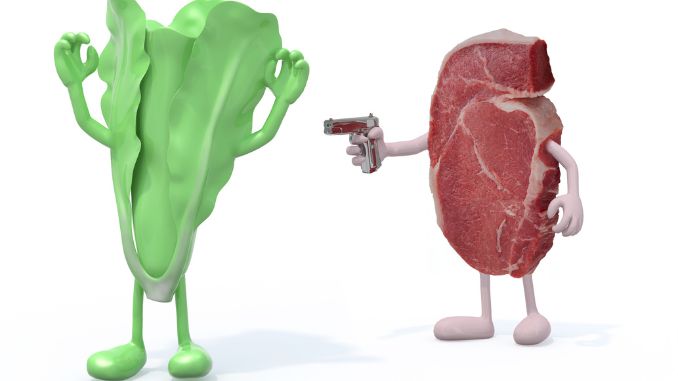
The Carnivore and Keto Diets are two popular dietary approaches with some key differences:
1. Food Focus
- Carnivore Diet: This diet focuses exclusively on animal products, including meat, fish, eggs, and dairy. It eliminates all plant-based foods.
- Keto Diet: The keto diet emphasizes low carbohydrate intake, high fat intake, and moderate protein levels. It includes foods like meat, fish, eggs, nuts, seeds, and non-starchy vegetables, along with healthy fats such as avocados and olive oil.
2. Carbohydrate Intake
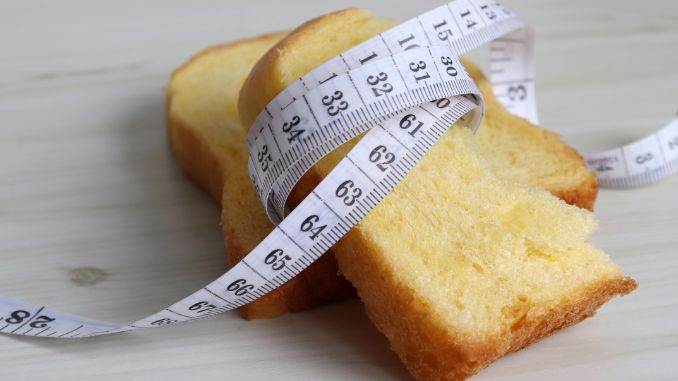
- Carnivore Diet: Practitioners typically consume zero carbohydrates since plant-based foods are excluded.
- Keto Diet: The goal is to restrict carbohydrates to a very low level, Typically between 20 and 50 grams, to trigger ketosis. In this state, the body burns fat instead of carbohydrates.
3. Fat Intake
- Carnivore Diet: While fat intake varies depending on the types of animal products consumed, there isn't a specific emphasis on high-fat intake.
- Keto Diet: High fat intake is a key aspect of the ketogenic diet, which burns fat typically comprising 70-80% [⁴] of total daily calories.
4. Protein Intake
- Carnivore Diet: Protein intake tends to be high on the carnivore diet due to the emphasis on animal products.
- Keto Diet: The keto diet requires moderate protein intake, as excessive protein consumption can interfere with ketosis by converting it into glucose through gluconeogenesis.
5. Fiber
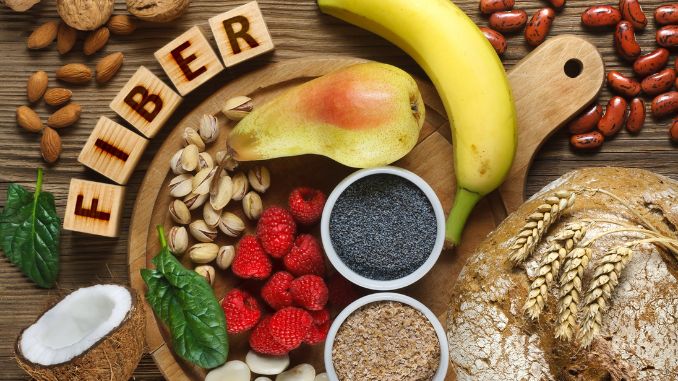
- Carnivore Diet: Since plant-based foods are excluded, the carnivore diet's fiber intake is very low or nonexistent.
- Keto Diet: While the calorie intake of non-starchy vegetables provides some fiber, it's generally lower than higher-carb diets that include more fruits, grains, and legumes.
6. Nutrient Diversity
- Carnivore Diet: Due to its exclusive nature, the carnivore diet may lack diversity in nutrients, particularly vitamins, minerals, and antioxidants in plant-based foods.
- Keto Diet: The keto diet provides a wider variety of foods, including a low-carb diet, no-carb vegetables, and certain fruits, which can contribute to a more diverse nutrient profile.
7. Sustainability
- Carnivore Diet: Some individuals find the carnivore diet challenging to sustain long-term due to its extreme restriction of food groups.
- Keto Diet: The keto diet can be more sustainable for many people because it allows for a wider variety of foods and can accommodate different dietary preferences and lifestyles.
While both the Keto and Carnivore diets involve restricting certain food groups, they differ significantly in terms of food focus, carbohydrate intake, fat intake, protein intake, fiber content, nutrient diversity, and long-term sustainability.
When choosing between these two dietary approaches, Individuals should consider their health goals, preferences, and nutritional [¹] needs.
Health And Weight Loss Benefits Of The Carnivorous Diet
- Weight Loss and Athletic Performance: Advocates claim that the carnivorous diet leads to significant weight loss and enhanced athletic performance by using stored fat for energy due to low carbohydrate intake.
- Muscle Maintenance: The high protein content helps preserve lean muscle mass during weight loss.
- Blood Sugar Control: This may benefit individuals with diabetes or insulin resistance by improving blood sugar levels.
- Digestive Health: Proponents suggest it improves digestion and gut health by eliminating plant-based foods that are hard to digest, potentially easing symptoms like bloating, gas, and IBS.
- Variability in Suitability: Responses to the diet can vary; it may not be appropriate for everyone, especially those who might face nutritional deficiencies without plant-based foods.
Health And Weight Loss Benefits Of The Keto Diet
1. Weight Loss
The keto diet is known for rapid initial weight loss due to reduced carbohydrate intake, forcing the body to burn fat for energy.
2. Health Benefits
Carnivore Diet vs Keto enhances insulin efficiency, reduces inflammation, and increases satiety. It may also protect brain health and aid in managing neurological conditions.
3. Dietary Adherence
Requires strict monitoring of macronutrients.
4. Side Effects
This can cause “keto flu [³]” including symptoms like fatigue and brain fog, as the body adjusts.
5. Nutritional Management
Necessitates careful planning to avoid nutritional deficiencies from restricted food groups.
Potential Risks And Drawbacks Of The Carnivorous Diet

- Nutritional Deficiencies: Eliminating plant-based foods can lead to a lack of fiber, vitamins, and minerals, which are crucial for overall health.
- Increased Health Risks: A high intake of animal foods, particularly red and processed meats, is associated with greater risks of cardiovascular disease, certain cancers, and other chronic conditions.
- Long-Term Effects: Considering the long-term impacts of a diet that excludes plant-based foods and heavily relies on animal products is critical.
Potential Risks And Drawbacks Of The Keto Diet
1. Keto Flu Symptoms
The significant reduction in carbs can lead to the “keto flu,” characterized by fatigue, headaches, and brain fog, although these usually subside as the body adjusts to fat as a fuel source.
2. Nutrient Deficiencies
Limiting fruits, vegetables, and whole grains can result in inadequate intake of vitamins, minerals, and fiber. Careful meal planning and possible supplementation are necessary to avoid deficiencies.
3. Dietary Challenges
The keto diet's strict nature can complicate social eating and dining out, requiring diligent meal planning and macronutrient tracking, which may not be sustainable for everyone long-term.
How To Choose The Right Diet For Your Health And Weight Loss Goals
Choosing the right diet for your health and weight loss goals involves several steps:
- Assess Your Health: Start with thoroughly assessing your current health status. Consider any existing medical conditions or dietary restrictions that could influence your diet choice.
- Define Your Goals: Clearly define what you want to achieve, whether it's weight loss, improved athletic performance, or better overall health.
- Research Diet Options: Investigate various diets to understand their principles, benefits, and potential drawbacks. Look for scientific evidence supporting their efficacy and safety.
- Consult Professionals: Seek advice from healthcare professionals such as dietitians or nutritionists. They can offer personalized recommendations tailored to your health assessment and goals.
- Consider Lifestyle Compatibility: Choose a diet that fits your lifestyle, including your meal preferences, cooking habits, and social engagements.
- Plan for Long-Term Sustainability: Ensure the diet is sustainable in the long term. A diet that is overly restrictive or hard to sustain can often fail.
- Monitor and Adjust: Once you've started a diet, monitor your progress and health. Be prepared to adjust based on your experiences and changes in your health or goals.
Combining Elements Of The Carnivorous Diet And Keto Diet For Optimal Results
For some individuals, combining elements of the carnivorous and keto diets may offer a middle ground that provides both weight loss benefits and nutrient diversity.
This approach involves primarily consuming animal products while incorporating low-carbohydrate, high-fiber plant-based foods.
By incorporating non-starchy vegetables like leafy greens, cruciferous vegetables, and low-sugar fruits, individuals can maintain a balanced intake of essential vitamins, minerals, and fiber while adhering to a low-carb, high-fat diet.
This approach offers more flexibility and may be easier to maintain over the long term.
Conclusion
In summary, both the carnivore diet and keto diets offer distinct weight loss and health approaches. The meat diet centers on animal-based foods, while the keto diet emphasizes high-fat, moderate-protein, and low-carb foods.
When considering the Carnivore Diet vs Keto, it's crucial to weigh the advantages and drawbacks of each. Consider your goals, lifestyle, and nutritional requirements when selecting the right one. Consulting a healthcare professional or dietitian can offer personalized guidance.
Remember, there's no one-size-fits-all diet. Choose what suits you best, promotes healthy weight loss, and provides essential nutrients.
Whether opting for the Carnivore Diet vs. Keto, or a blend of both, prioritize your health and steer clear of processed foods, listening attentively to your body's cues.
Discover the ultimate guide to mastering the ketogenic diet! Whether you're a beginner or looking to fine-tune your keto journey, our comprehensive guide has everything you need to succeed. From delicious recipes to expert tips, it's all here.
Rick Kaselj MS, is a leading kinesiologist and injury specialist as well as co-creator of the best-selling Unlock Your Hip Flexors program. Rick creates exercise programs that help people heal injuries and eliminate pain, so they can go back to living a full, active, healthy life.

